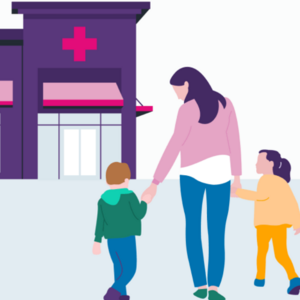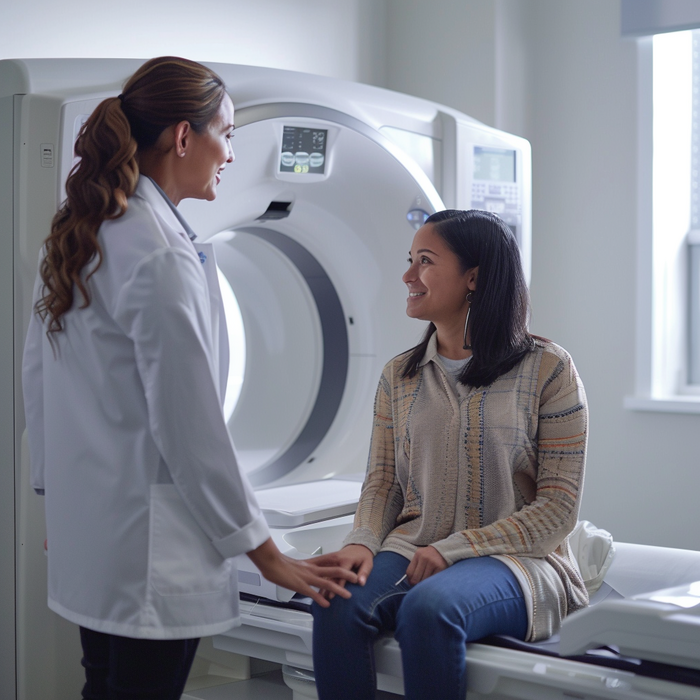
Feel better faster. Get care today.
From the clinic or your couch. Find high quality, same-day urgent care for you and your kids. Book an urgent care visit today.

A CT scan is similar to an X-ray in that it can show different views and structures inside your body. Some people may confuse a CT scan and an MRI scan, both are common imaging techniques, but an MRI uses magnetic energy instead of radiation like the cat scan. CT scans are more detailed than an average X-ray—taking anywhere from a couple dozen to hundreds of X-ray images, according to Radiologyinfo.org. These X-rays are layered and computerized to give doctors a 3-D view of your body.
A CT scan allows a radiologist to see things an X-ray can’t show, like certain body structures that overlap or appear clear on an X-ray.
A CT scan is done to get highly detailed images of the inside of the body—commonly used to diagnose and monitor different conditions, including:
Additionally, CT scans are useful for guiding medical procedures, such as biopsies and surgeries, and for evaluating the effectiveness of ongoing treatments.
There are very few preparations needed for a CT scan, and your doctor will be able to give you specific instructions if there are any. According to the CDC, women who are pregnant or breastfeeding should inform the medical staff before a CT scan. Additionally, they note that you should fast from food and drink for a few hours before your scan.
If you are scheduled for a CT scan, consider the following steps from the CDC:
Contrast material (also known as contrast dye) is an iodinated contrast substance used in medical imaging to enhance the visibility of internal structures or organs. Barium is another type of contrast that is used for computed tomography (CAT scans). The iodinated contrast material helps to highlight specific areas inside the body — allowing doctors to get a better view. This is particularly useful in identifying tumors, problems with blood vessels, and areas of inflammation or infection, according to the CDC.
CT scanners may require contrast material to improve the visualization of blood vessels, organs, tumors, and other abnormalities that may not be clearly visible with standard imaging techniques.
Contrast dye can be given in a few different ways, according to the CDC, including:
A CT scan does use radiation to gather imaging, so there are some risks involved. According to the CDC, these risks include:
CT scans are fairly common, according to Radiologyinfo.org. But if you’ve never had one before, you may be wondering what to expect. Here are some insights from Radiologyinfo.org:
According to the CDC, after your CT scan, you may be able to resume normal activities unless you were given a sedative or anesthesia. If this is the case, you will need some time to recover before leaving and will need someone to drive you home.
A CT scan usually needs to be ordered by a physician. If you need a CT scan, you can find a provider who can order one for you using Solv.
A CT scan is a radiology imaging test that uses X-rays and a specialized computer to create detailed images of the body's internal structures.
CT scans provide more detailed images than X-rays, and unlike MRIs, they use radiation instead of magnetic energy.
CT scans are commonly used to diagnose and monitor conditions like tumors, infections, and internal bleeding. They can also guide medical procedures and evaluate the effectiveness of treatments.
Preparations may include fasting, removing metal objects, and possibly ingesting or receiving contrast material. Specific instructions will be provided by your healthcare provider.
Yes, risks include radiation exposure, allergic reactions to contrast material, potential kidney damage in patients with pre-existing conditions, and a rare risk of developing cancer from cumulative radiation exposure.

From the clinic or your couch. Find high quality, same-day urgent care for you and your kids. Book an urgent care visit today.